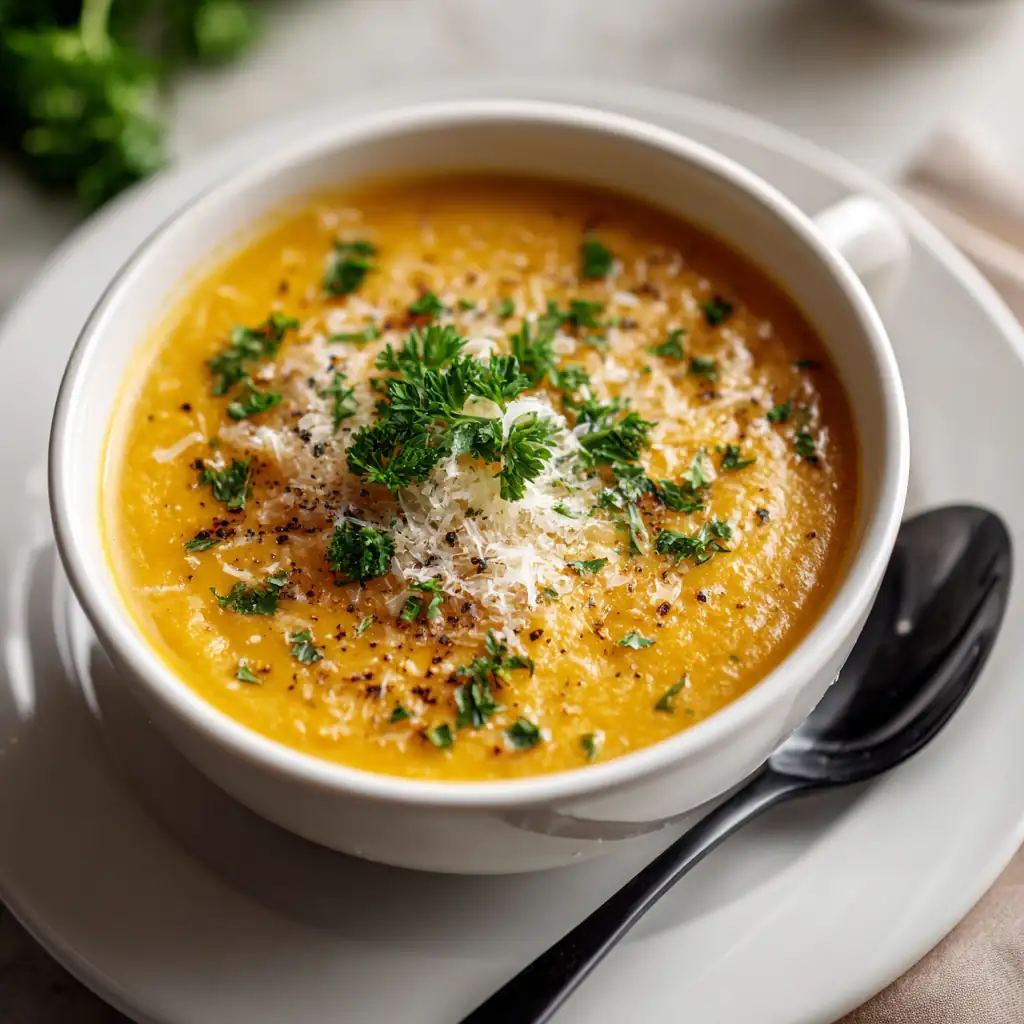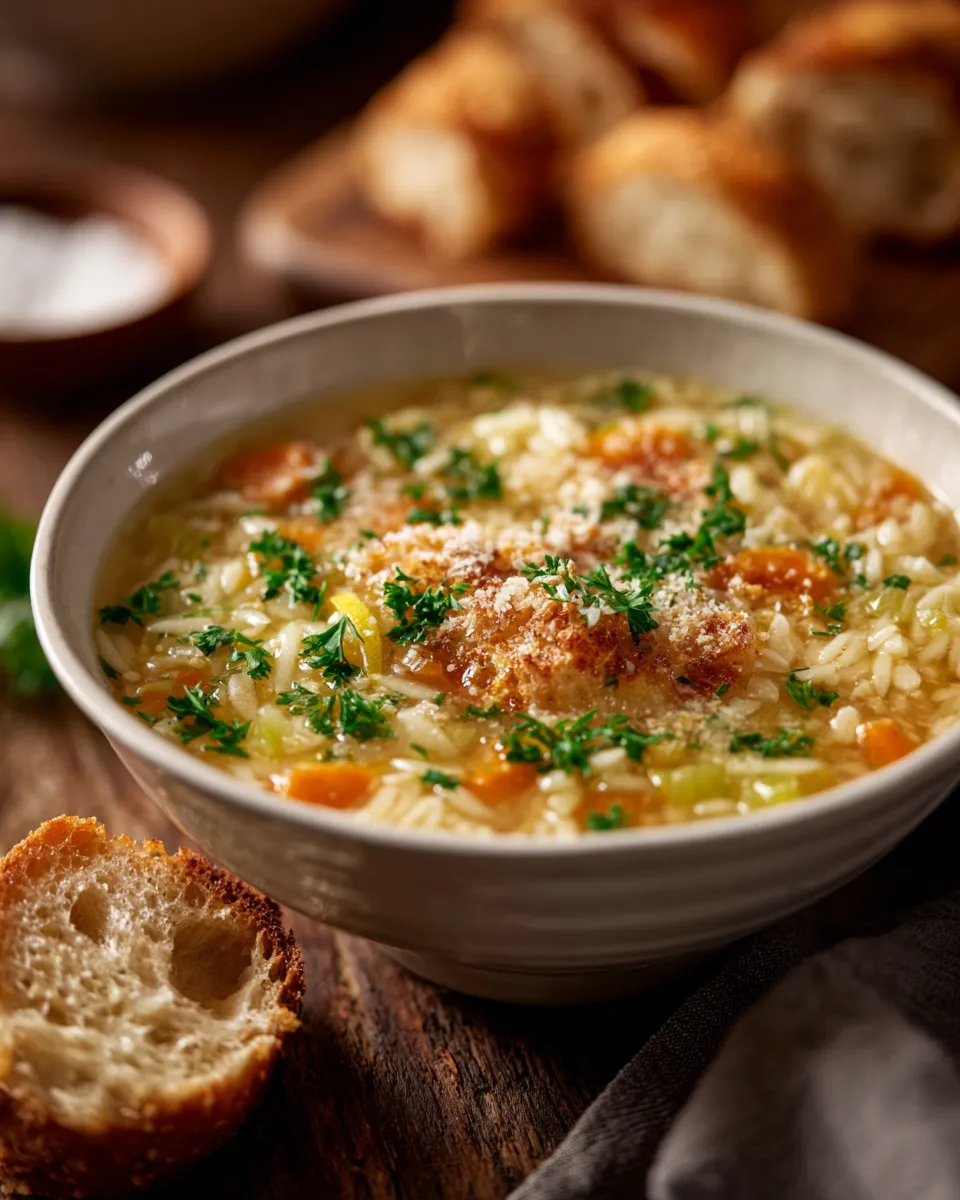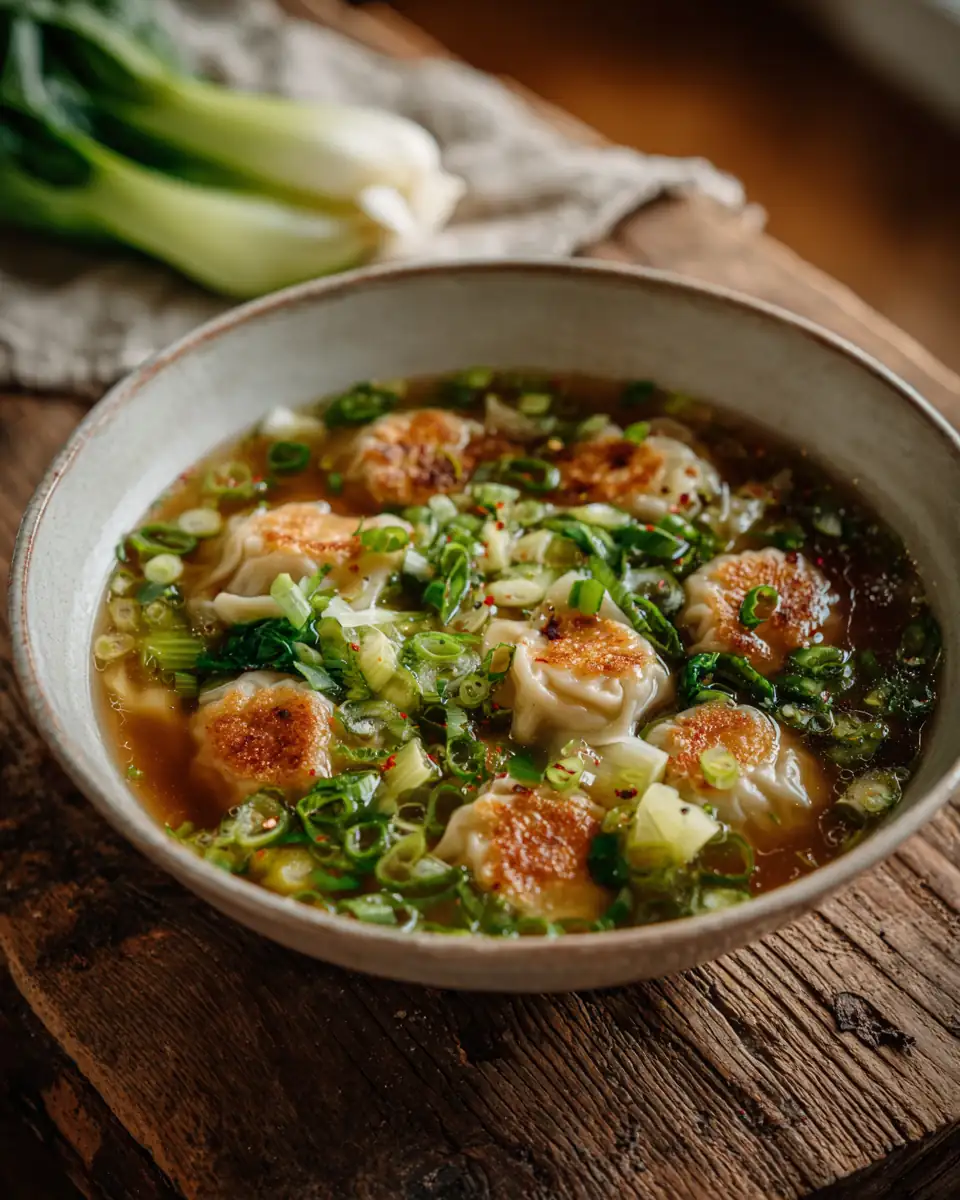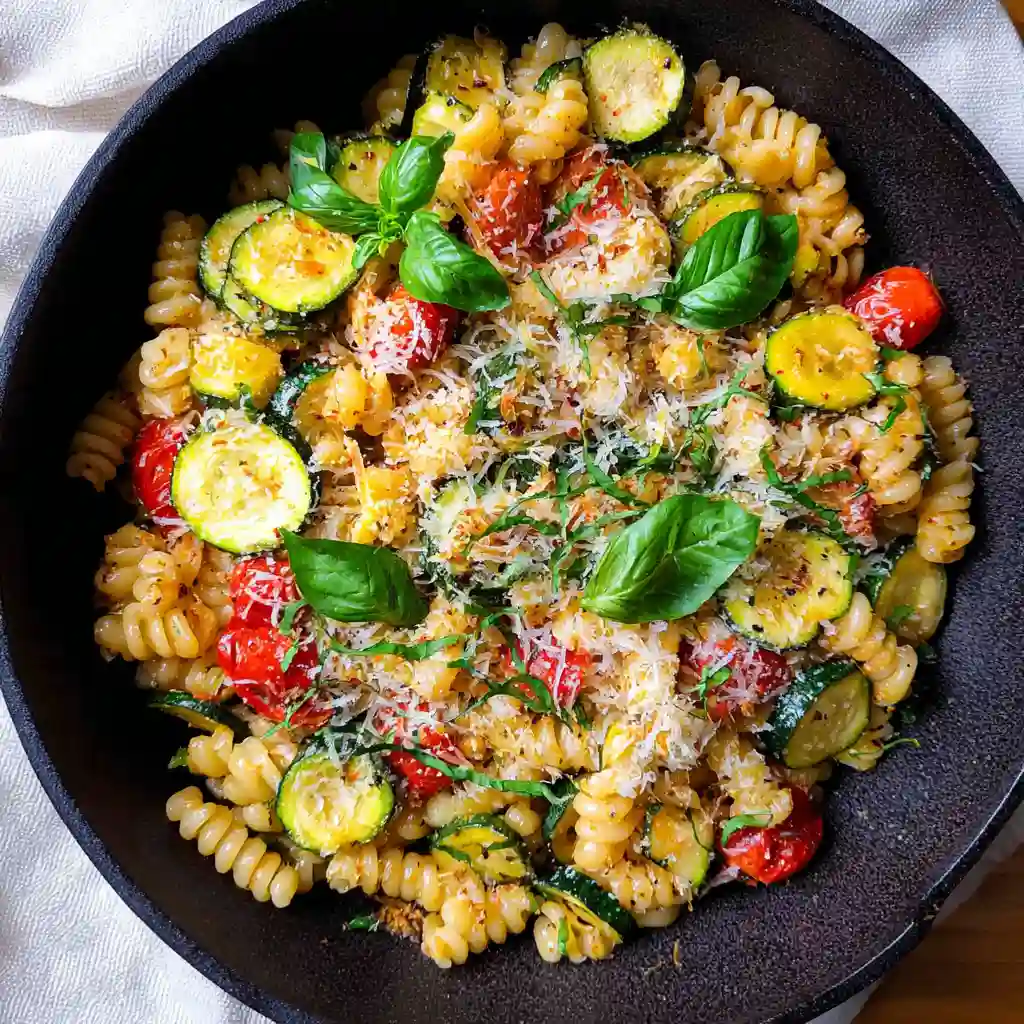Introduction
Italian Penicillin Soup is the kind of dish that doesn’t just fill your stomach—it wraps you in warmth when the world feels a little too loud. This soulful soup combines the gentle flavors of carrots, celery, onion, and garlic, all simmered down into a smooth, nourishing broth thickened with pastina. Whether you’re feeling under the weather or just craving something familiar and homemade, this cozy bowl offers comfort with every spoonful. We’ll dive into how to make it, what makes it so good for the body (and soul), and why it’s earned the nickname “penicillin” in Italian kitchens for generations.
The Healing Magic of Italian Penicillin Soup
A soup born from Italian wisdom
You know those days when your energy is low and nothing sounds quite right for dinner? That’s when Italian Penicillin Soup steps up. This isn’t your average chicken noodle—it’s a warm hug built from pantry basics and old-school kitchen wisdom. Italians have been simmering vegetables into silky broths for centuries, using what’s on hand to feed bodies and hearts alike. The base is simple: olive oil, carrots, celery, onion, garlic, and good broth. But it’s the method—slow simmering, careful seasoning, and that final squeeze of lemon—that transforms the ingredients into something deeply restorative.
This recipe takes inspiration from both Italian minestrina and Jewish penicillin, blending the traditions into one silky, golden soup. The pastina, tiny star- or dot-shaped pasta, adds body and makes it kid-approved. And while a parmesan rind is optional, it infuses the broth with that unmistakable umami flavor you only get from long-simmered cheese. It’s that combination of comfort, tradition, and easy nourishment that makes this recipe more than a meal—it’s a ritual.
Why it feels like healing in a bowl
There’s a reason people reach for soup when they’re sick—it hydrates, soothes, and delivers nutrients without weighing you down. Italian Penicillin Soup goes one step further by blending those softened vegetables into a smooth broth. That means you’re not just chewing through veggies—you’re drinking them in. This makes it easy to digest, and the added lemon brightens the flavor while supplying a hit of vitamin C. It’s gentle on sensitive stomachs but satisfying enough for anyone at the table.
And it’s not just about what’s in the soup—it’s about how it makes you feel. The scent of garlic and onion sautéing in olive oil, the quiet simmer on the stove, the final ladle into your favorite bowl… it’s all part of the medicine. You slow down. You feel cared for. And that alone is sometimes exactly what we need.
Smart Cooking Tips and Ingredient Swaps for Italian Penicillin Soup
Make it yours with easy variations
One of the best things about Italian Penicillin Soup is how flexible it is. Whether you’re dealing with allergies, picky eaters, or an empty fridge, this soup adapts. Let’s say you’re out of pastina—any small pasta will work, like orzo, acini di pepe, or even broken-up spaghetti. No lemon? Try a splash of apple cider vinegar to brighten things up. Want it dairy-free? Skip the parmesan rind and finish with a swirl of olive oil for richness.
You can also swap the broth depending on what you have or your dietary needs. Chicken broth adds classic depth, but vegetable broth makes it fully vegetarian without losing comfort. And if you want even more healing power, a homemade bone broth base will give this soup a rich, collagen-boosted boost. For those who like a little extra flavor, toss in a pinch of dried thyme or Italian seasoning while the vegetables simmer. It’s subtle, but it brings out the best in every ingredient.
This recipe is also a great fridge cleaner. Got some zucchini, spinach, or leeks? Chop them up and add them to the simmer. They’ll blend right in when you puree. Even leftover cooked chicken or shredded rotisserie meat can be added at the end for a protein boost.
Save time without skipping flavor
If you’re short on time, this soup still works. While browning the vegetables adds flavor, you can toss everything into the pot all at once, cover with broth, and get simmering. It won’t be quite as deep in taste, but the lemon at the end and that parmesan (if using) help make up the difference.
Want to meal prep? Cook the soup base ahead and freeze it without the pasta. When you’re ready to eat, thaw, reheat, and stir in freshly cooked pastina. This keeps the texture just right—no mushy pasta in sight. Another pro tip? Freeze it in small portions for grab-and-go lunch bowls. Just heat, squeeze in lemon, and top with parmesan and pepper.
Time-saving doesn’t mean sacrificing quality—it means working smarter in your kitchen. With a few thoughtful steps, you can make a batch of Italian Penicillin Soup that tastes like it simmered all afternoon, even if you whipped it up between Zoom calls and school pickups

Italian Penicillin Soup
Ingredients
- 3 Tbsp olive oil
- ▢3 large carrots peeled and roughly chopped
- ▢1 yellow onion quartered
- ▢5 cloves garlic peeled
- ▢3 ribs celery halved
- ▢1 tsp salt
- ▢black pepper
- ▢parmesan rind optional
- ▢8 cups chicken or vegetable broth
- ▢1 ¼ cup pastina or other small pasta shape
- ▢1 lemon more as desired
- To serve
- ▢freshly grated parmesan and black pepper
- ▢drizzle of olive oil optional
- ▢chopped parsley optional
Instructions
- Cook vegetables: Add olive oil to a large pot and heat to medium. Add your vegetables, salt, and pepper. Cook for 4-5 minutes, stirring occasionally, or until vegetables are slightly browned. To save time, skip this step and add oil and veggies right to your broth.
- Simmer soup: Add the parmesan rind and broth. Cover, and turn the heat to high until the broth reaches a gentle boil. Turn the heat down to medium-low and continue to simmer, covered, for 25-30 minutes or until the vegetables are very soft. Stir occasionally.
- Puree vegetables: Remove the parmesan rind and set aside. Use your immersion blender to puree the vegetables until totally smooth. If you don’t have an immersion blender, spoon all the cooked vegetables into a regular, heat-safe blender. Blend until smooth and add back to your pot.
- Cook pasta: Add your pastina or small pasta to the simmering soup. Cook for 8-10 minutes or until cooked al-dente, stirring occasionally. Then, turn off the heat. If you’re planning on storing leftovers, cook pastina separately and combine with broth right before serving.
- Add lemon: Stir in the juice of a full lemon. Taste, and adjust seasonings and lemon juice as desired. Stir in more broth for a thinner soup, if desired.
- Serve: Add soup to serving bowls and garnish with parmesan, black pepper, and whatever else you like. Enjoy!
Notes
Serving Italian Penicillin Soup and Storing It the Right Way
How to serve it for maximum comfort
When the soup is ready and ladled into bowls, the finishing touches make all the difference. A generous sprinkle of freshly grated parmesan melts into the surface and adds depth. A few cracks of black pepper bring a gentle heat, and a drizzle of olive oil gives it a silky richness. Want to add freshness? Toss on some chopped parsley. Each garnish layers flavor and texture, transforming a simple bowl into a comforting experience.
You can serve Italian Penicillin Soup as a light lunch or a starter, but it also holds its own as a main. Pair it with warm crusty bread, focaccia, or even a simple grilled cheese for a cozy dinner. If you’re serving guests, consider offering lemon wedges at the table so everyone can adjust the brightness to their liking. For kids, pastina alone is usually a win—but you can even swirl in a bit of cream or top with mild shredded cheese if you want extra richness.
Some folks like adding cooked shredded chicken for more protein, especially if they’re eating this soup while recovering from illness. It’s gentle, nourishing, and satisfying in a way that feels just right when you need a bit of care. Whether you’re curled up with a book or setting the table for family dinner, this soup makes any setting feel a little more special.
Smart storage tips for leftovers
Leftover soup is a gift, but storing it properly keeps that comfort intact. First tip: if you’re planning ahead, cook the pasta separately. This keeps it from soaking up all the broth and getting too soft in the fridge. Simply add a scoop of cooked pastina to your bowl and ladle hot broth over it when serving.
For refrigerator storage, let the soup cool completely before transferring it to airtight containers. It’ll keep well for 3 to 4 days. If the soup thickens, just stir in a bit of broth or water while reheating. Always heat gently to preserve the smooth texture.
Freezing is also an option. Just freeze the pureed broth without pasta in freezer-safe containers or silicone molds for easy portions. Label with the date and freeze for up to 3 months. When ready to eat, thaw in the fridge overnight or reheat directly on the stove. Cook the pasta fresh, stir it in, and you’re set.
Proper storage means that comfort is only ever a few minutes away. Whether it’s for a busy weeknight or a sick day safety net, Italian Penicillin Soup has your back.
Why It’s Called “Italian Penicillin” and What It Does for Your Body
The meaning behind the name
So, why the nickname Italian Penicillin? It’s not just a cute phrase—it’s a nod to how healing this soup can feel. The term mirrors the famous “Jewish Penicillin” (chicken soup), but with an Italian twist. It’s built on the same principles: simple, slow-simmered ingredients that comfort and nourish. Italians have long leaned on brothy soups—called minestrina—as go-to meals for recovery, colds, or emotional comfort.
Unlike cream-heavy soups or those full of processed ingredients, this version is clean and light, with a focus on whole vegetables and good broth. The process of simmering aromatics, blending them smooth, and adding lemon makes it deeply soothing and easy to digest. And while it may not be real penicillin, many folks swear by its effect when they’re feeling run-down.
The parmesan rind (if you include it) adds richness and depth without needing a lot of salt or added fats. That’s the secret to its full flavor—it tastes indulgent while staying totally wholesome.
Nutrition that actually helps
This soup does more than warm you up—it delivers real nourishment. Here’s how:
- Carrots, celery, garlic, and onion all provide vitamins A, C, and potassium—great for immunity and digestion.
- Lemon juice adds vitamin C and a bright boost that can help soothe sore throats and support hydration.
- Pastina offers easy-to-digest carbs, giving your body quick energy when it needs it most.
- Olive oil provides heart-healthy fats that make the soup satisfying and help your body absorb nutrients.
And unlike many comfort foods, this soup is naturally low in sugar and gentle on the stomach. It’s vegetarian (if you use veggie broth) and easy to make gluten-free by swapping the pasta for a GF alternative. The smooth consistency means it’s perfect for kids or anyone recovering from illness. It’s a one-pot wonder that feeds the body without overwhelming it.
In short, it might not replace your medicine cabinet—but Italian Penicillin Soup comes pretty close when you need a little edible TLC.

Frequently Asked Questions About Italian Penicillin Soup
1. What is Italian Penicillin Soup made of?
Italian Penicillin Soup is made from a base of carrots, celery, onion, and garlic simmered in olive oil and broth. It’s then blended until smooth and finished with pastina (small pasta), fresh lemon juice, and optional garnishes like parmesan and parsley. Some recipes include a parmesan rind for extra depth of flavor.
2. Can I make Italian Penicillin Soup vegetarian or vegan?
Yes. To make it vegetarian, simply use vegetable broth and skip the parmesan rind or replace it with nutritional yeast for a cheesy flavor. To go fully vegan, also omit the final parmesan garnish or use a vegan alternative.
3. Why is it called “penicillin” soup?
The name “Italian Penicillin Soup” comes from its reputation as a healing food—much like chicken soup is in Jewish culture. It’s simple, soothing, and packed with gentle, nutritious ingredients that make it a go-to for sick days or emotional pick-me-ups.
4. Can I freeze Italian Penicillin Soup?
Absolutely. The pureed soup base freezes well for up to 3 months. Just leave out the pasta before freezing to avoid mushiness. When ready to serve, reheat the soup and cook fresh pasta to stir in before serving.
Conclusion
Italian Penicillin Soup isn’t just a meal—it’s comfort in a bowl. With every spoonful, it delivers warmth, nourishment, and that unmistakable feeling of being taken care of. Whether you’re coming down with something, recovering from a busy week, or just craving something gentle and satisfying, this soup shows up with exactly what you need. Made from humble ingredients and a bit of stovetop patience, it’s the kind of dish that brings peace to your kitchen and your body.
Simple, smooth, and full of love—this recipe has earned its name. Keep it close for the moments when you want your food to feel like home.










